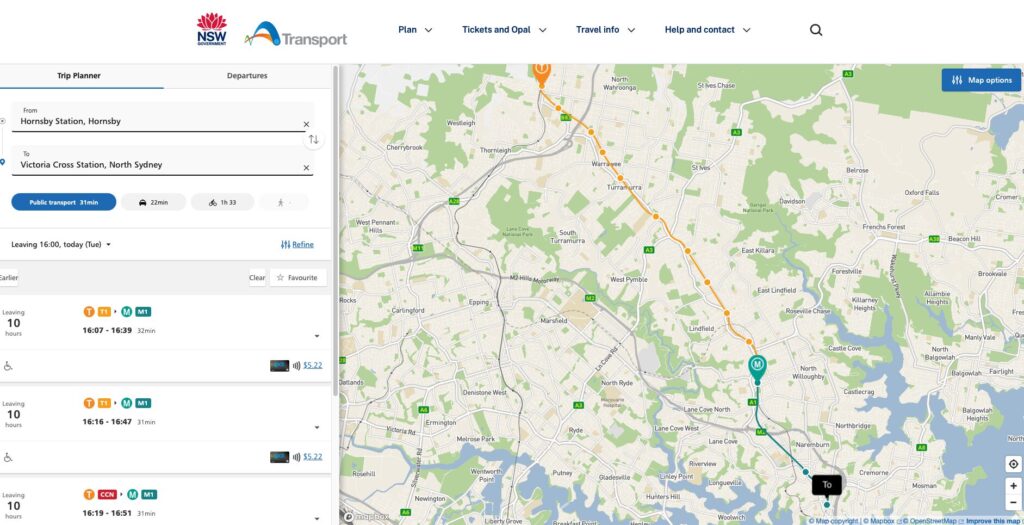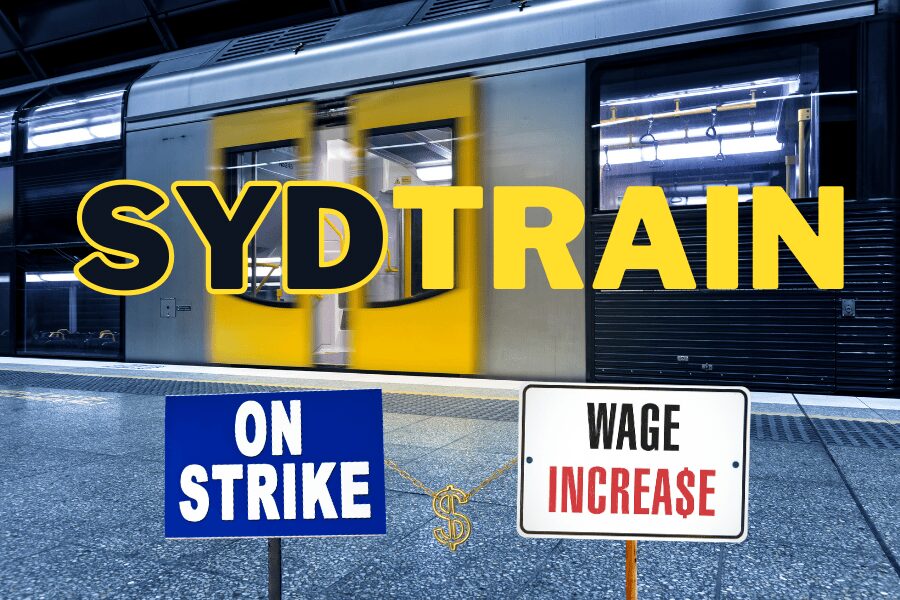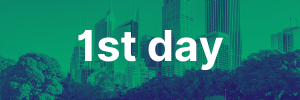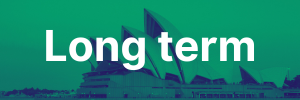Here are things I love about Sydney: diverse modes of transport that other cities don’t offer as comprehensively.
From trains, the metro, light rail, buses, and ferries, it is so great!
Sydney is well known for its world-class transport system, which, however, is not far from being considered inefficient due to regular interruptions such as track work and industrial action.
My thought as a migrant coming to Sydney, especially from a city like Seoul, is that such trackwork is unimaginable, especially considering the cost of transport in Sydney is quite high.
For example, as of January 2025, a one-way ride from Sydney CBD to Hornsby is $4.20 AUD. A return ride in the same day will be $8.40 AUD.
If you live in a further location such as Penrith, the single ride is $5.62 AUD, which increases for a return trip to $11.24 AUD.
Sydney Public Transport fare can be checked from here –> https://transportnsw.info/trip#/trip

This may be due to the recent full extension of the metro and attempts to cover the cost of that service, not to mention that the Sydney Metro is driverless, super frequent, and fast.
For those interested, my monthly travel cost to the office is currently:
$8.40 x 12 = $100.80 AUD
(This is because I have a mandatory requirement to attend the office 3 days a week)
Hypothetically, if I were to go to the office 5 days a week, my budget for travel to work would increase to $168.00 AUD.
Depending on your earnings, this could be insignificant or substantial.
Interestingly, recent industrial action was caused by a train driver’s dispute over wages between the government and public sector workers in Australia.
I found an interesting article published by the AFR by Euan Black on January 17, 2025 (Source of article: https://www.afr.com/work-and-careers/workplace/what-train-drivers-psychiatrists-and-others-get-paid-20250117-p5l530), comparing the earnings of Sydney Train Drivers to other professionals.
The article highlights the significant pay increases demanded by unions, particularly for train drivers and psychiatrists, amid rising inflation. The article also compares the salaries of these professions with other high-paying occupations in Australia.
- Train drivers: The average annual salary for a Sydney Trains driver is $128,196 AUD, including overtime and allowances. The NSW government has offered a 14% increase over four years, while the RTBU (The Australian Rail Tram and Bus Industry Union) is demanding a 32% increase.
- Psychiatrists: The minimum, full-time base salary for a psychiatrist in NSW is $186,241 AUD, which can rise to $438,000 AUD with experience and allowances. The government has offered a 10.5% pay rise over three years, but the union is seeking a 25% increase.
- Other high-paying professions: The article also mentions the salaries of software programmers ($131,846), dentists ($175,161), solicitors ($155,554), teachers ($104,301), journalists ($92,284), economists ($162,332), truck drivers ($80,088), and registered nurses ($78,559) in AUD.
My takeaway is that after such drama, which tends to happen regularly in Sydney, we need to be prepared for a price increase in public transport fees, which tend to rise gradually each year.
It’s a complex situation, isn’t it? On one hand, you can understand why train drivers and other public sector workers are fighting for better wages. The cost of living in Sydney is astronomical, and everyone deserves to earn a decent living, especially in a city that demands so much. It’s easy to empathise with their struggle for financial security, especially when inflation keeps rising and wages haven’t kept pace. They have families to support, bills to pay, and dreams to pursue, just like everyone else.
But then there’s that nagging feeling in the back of your mind: “Here we go again, another fare hike.” It feels like a never-ending cycle. Every time workers negotiate a well-deserved raise, the cost gets passed down to the commuters. You’ve witnessed this pattern since you arrived in Sydney back in 2000, and it’s hard not to feel a sense of bitterness.
It’s a convoluted feeling because you genuinely want workers to be paid fairly, but you also feel the pinch every time your travel costs increase. It’s a constant reminder of how expensive it is to simply exist in Sydney. You work hard, you try to make ends meet, but the goalposts seem to keep moving further away.
This situation highlights a larger issue: the struggle to maintain a decent standard of living in a city that’s becoming increasingly unaffordable. It’s a balancing act between fair wages and affordable essential services. And unfortunately, it often feels like the commuters are caught in the middle.
Perhaps the answer lies in finding more sustainable solutions that don’t always result in a direct trade-off between wages and fares. Maybe it’s time for a broader conversation about how to make Sydney more livable for everyone, not just those at the top. It’s a complex issue with no easy answers, but it’s a conversation that needs to happen.







